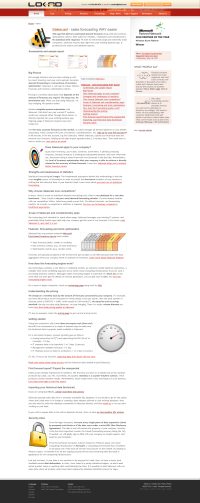Major documentation upgrade for Salescast

Our clients need better forecasts, but they also need better insights. Salescast, our webapp dedicated to retail, wholesale and manufacturing was having about 200 words of documentation, which, by any standard was thin.
Hence, over the last couple of weeks, we gathered materials, and this morning, we released about 7000 words of documentation concerning Salescast ins and outs.
First, we clarify the scope of Salescast, with special focuses on large retail networks, eCommerce and manufacturers. In short, if your company has inventory, then Salescast do apply to your case.
Furthermore, we details pros and cons of statistics. There are limits in what can be achieved through statistics; and Lokad does not come with divination capabilities.
As a rather touchy subject, we also position Salescast against our competitors. Naturally, we have a rather biased viewpoint here. So in the end, it comes down to benchmark us and see for yourself.
Also, Salescast isn’t even remotely intended as a silver-bullet for supply chain. Lokad is a rather social software company in the sense it plays well with buddies, aka other complementary apps.
Nonetheless, Salescast does have some nice features on its own. It delivers Excel reports with both forecasts and key inventory optimization metrics (but you probably know that already). Just in case, here is a sample Excel report.
At this point, people typically ask How does your forecasting engine works? and How much does it cost? We already had two pages, namely Technology and Pricing, addressing those two questions, but we have tried to adopt a more practical angle here.
Once all those items are cleared, it’s time to get started with Lokad. From there, you should quickly end-up with your first forecast report delivered. Expect the unexpected, forecasting is a counter-intuitive science.


